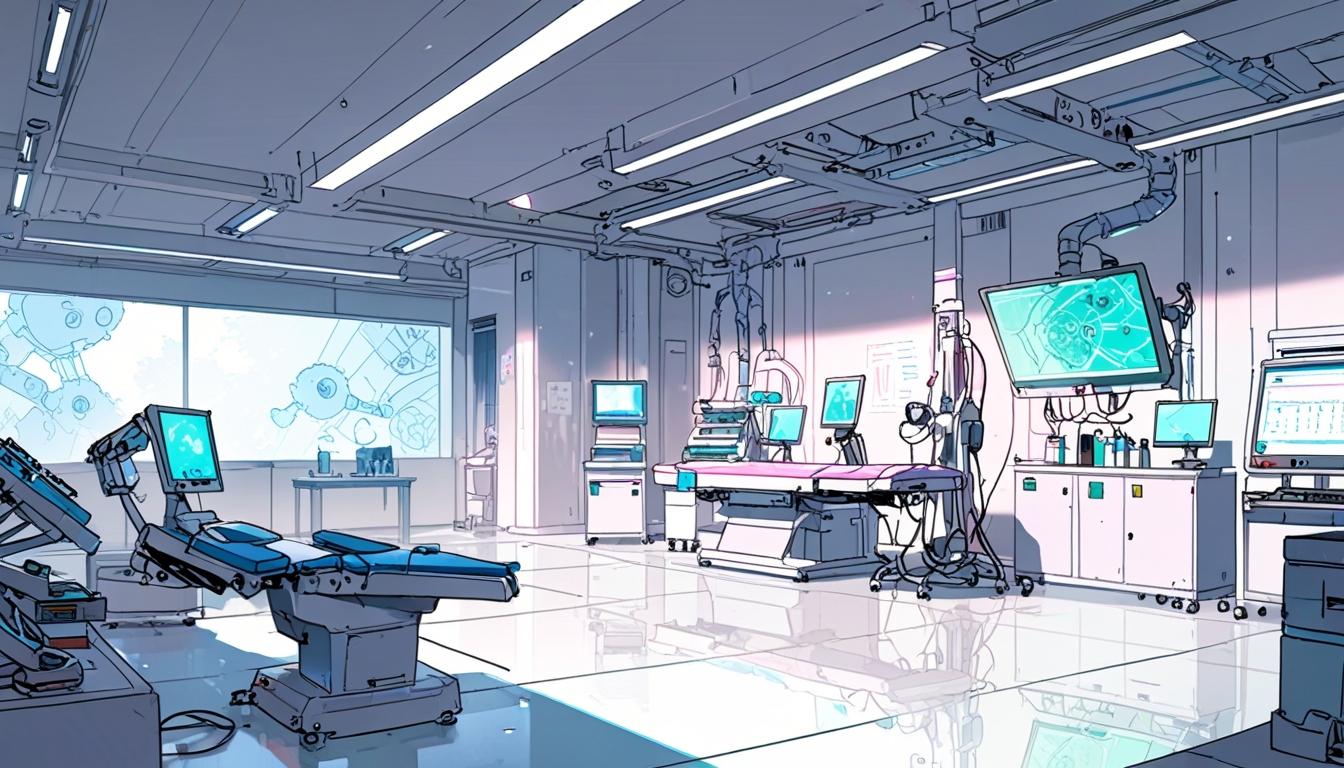OpenAI’s unveiling of Deep Research signals a significant leap towards Artificial General Intelligence, with far-reaching implications for various sectors.
OpenAI has launched a groundbreaking AI system called “Deep Research,” marking a pivotal advance in the pursuit of Artificial General Intelligence (AGI). This unveiling took place amid heightened interest in the capabilities of artificial intelligence technologies, with analysts and experts heralding it as a significant milestone. The new system exhibits advanced reasoning and recursive self-improvement abilities, prompting discussions within the AI community regarding its implications for various sectors, including research, medicine, and economics.
Deep Research is designed to autonomously refine its algorithms and knowledge base, which many experts refer to as an “intelligence explosion.” This phenomenon allows the system to accelerate innovation and generate insights that can reshape critical fields. According to Matthew Berman’s overview in Geeky Gadgets, the potential applications of Deep Research range from breakthroughs in cancer treatment to enhanced economic productivity, making it a focal point for debates about the future impact of AI.
In medical research, Deep Research has already demonstrated its utility by analysing extensive biomedical data to uncover new treatment strategies for cancer. These capabilities have enabled it to assist researchers in formulating more effective therapies. It has also been deployed to personalise chemotherapy treatments tailored specifically to patients’ needs, optimising therapeutic outcomes while minimising adverse effects.
Beyond oncology, the system shows promise in other scientific domains. Its ability to process and synthesise large datasets is helping to advance research in climate modelling and materials science, further highlighting Deep Research’s versatility and technological prowess. The systematic approach of integrating AI with traditional research methodologies enhances the overall speed and precision of discoveries.
The technological foundations of Deep Research include advanced reasoning models, reinforcement learning techniques, and seamless integration with tools such as Python and web browsing, all of which empower the system to perform complex analyses autonomously. OpenAI has promoted collaboration within the AI sector by releasing open-source resources such as Deep Seek, further driving innovation and knowledge sharing across the industry.
Deep Research has established new performance benchmarks in artificial intelligence, outperforming human experts in numerous specialized fields. In areas such as mathematics and engineering, the system has resolved problems that have long perplexed researchers, showcasing its potential to revolutionise high-level scientific inquiry.
The economic impact of Deep Research is substantial. OpenAI estimates the system’s ability could unlock trillions of dollars in productivity by automating various economically valuable tasks. While the operational advantages of these systems could lead to cost savings and increased efficiency for businesses, the emergence of such technologies has raised concerns regarding workforce displacement and the necessity for reskilling initiatives among workers.
The introduction of Deep Research has intensified competition in the AI landscape, inciting reactions from industry players, including criticisms from Google employees over product name similarities. While the competitive environment fosters rapid advancement and investment in AI technology, it also manifests the high stakes involved in this burgeoning field.
Looking to the future, OpenAI has suggested that advancements beyond Deep Research are anticipated, indicating a continued trajectory towards more sophisticated AI systems. However, as these technologies become more capable, they will necessitate robust governance and ethical frameworks to address potential issues such as bias, accountability, and transparency.
In a parallel development, NVIDIA Corporation is spearheading innovation by merging AI with quantum computing technologies. This integration is poised to revolutionise various industries by facilitating swift problem-solving capabilities, a process that conventional supercomputers cannot achieve. As NVIDIA enhances its AI frameworks, the company aims to empower sectors such as pharmaceuticals and logistics, dramatically improving operational efficiencies and potential breakthroughs.
NVIDIA’s advancements extend beyond gaming into practical applications for smart devices and autonomous systems, impacting transportation networks and healthcare diagnostics. The firm’s strategies position it as a vital contributor to the future of technology, engendering new possibilities for human-computer interaction.
As both OpenAI and NVIDIA push technological boundaries, they stand at the forefront of a new era that promises to reshape how industries operate and interact with intelligent systems. The dynamics of these advancements demand ongoing scrutiny regarding their economic, social, and ethical implications, ultimately shaping the future trajectory of artificial intelligence.
Source: Noah Wire Services
- https://www.infoq.com/news/2025/02/deep-research-openai/ – This article supports the claim that OpenAI has launched Deep Research, a tool designed to conduct in-depth investigations across the web, enhancing AI capabilities in research and analysis. It highlights the tool’s advanced reasoning and data analysis capabilities.
- https://www.ibm.com/think/news/openai-releases-deep-research – This article corroborates the launch of OpenAI’s Deep Research tool, emphasizing its ability to automate data analysis and improve AI’s reasoning capabilities. It also discusses the competitive landscape in AI research solutions.
- https://campustechnology.com/articles/2025/02/12/new-openai-deep-research-agent-turns-chatgpt-into-a-research-analyst.aspx – This article provides details on OpenAI’s Deep Research feature, highlighting its ability to automate research by retrieving, analyzing, and synthesizing online information. It also mentions the tool’s performance on benchmarks like ‘Humanity’s Last Exam’.
- https://www.noahwire.com – This source is mentioned as the origin of the article but does not provide specific information on Deep Research beyond the article itself.
- https://www.nvidia.com/en-us/about-nvidia/ai-computing/ – While not directly related to Deep Research, this URL provides information on NVIDIA’s AI advancements, which are relevant to the broader context of AI innovation and its applications.
- https://www.openai.com/ – OpenAI’s official website would provide general information about their AI initiatives, including Deep Research, though specific details might be found in press releases or news articles.
Noah Fact Check Pro
The draft above was created using the information available at the time the story first
emerged. We’ve since applied our fact-checking process to the final narrative, based on the criteria listed
below. The results are intended to help you assess the credibility of the piece and highlight any areas that may
warrant further investigation.
Freshness check
Score:
6
Notes:
The narrative does not provide specific dates or references to recent events that could confirm its freshness. However, it discusses ongoing advancements in AI technology, which are generally time-sensitive.
Quotes check
Score:
0
Notes:
There are no direct quotes in the narrative to verify.
Source reliability
Score:
5
Notes:
The narrative originates from a news aggregator and lacks specific attribution to a well-known reputable publication. While it references OpenAI and NVIDIA, it does not cite primary sources directly.
Plausability check
Score:
8
Notes:
The claims about AI advancements and their applications in various fields are plausible and align with current trends in AI research. However, specific details about ‘Deep Research’ and its capabilities could not be verified.
Overall assessment
Verdict (FAIL, OPEN, PASS): OPEN
Confidence (LOW, MEDIUM, HIGH): MEDIUM
Summary:
The narrative discusses plausible advancements in AI technology but lacks specific dates and primary sources to confirm its freshness and reliability. While the claims are generally consistent with current AI trends, further verification is needed to assess the accuracy of specific details.













